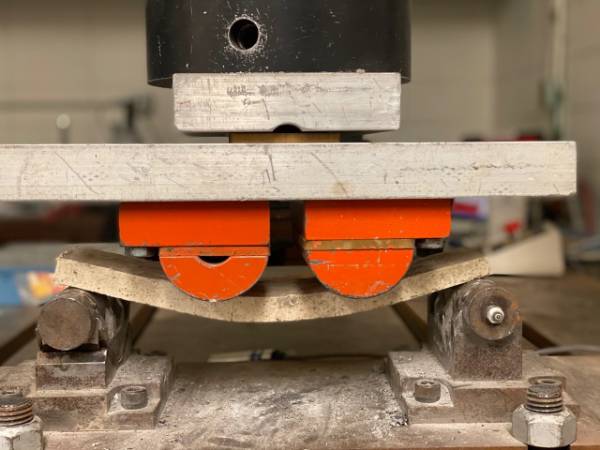LSU Researchers Advance Work in Bendable Concrete Using Sugarcane Byproduct
Team is Also Working on a Geopolymer-Based Concrete
December 14, 2020
 BATON ROUGE, LA – In 2019, researchers from LSU’s Bert S. Turner Department of Construction
Management advanced their research into Engineered Cementitious Composites, or “bendable
concrete,” by adding a new ingredient to the recipe and replacing the fine river sand
used with sugarcane bagasse ash (SCBA).
BATON ROUGE, LA – In 2019, researchers from LSU’s Bert S. Turner Department of Construction
Management advanced their research into Engineered Cementitious Composites, or “bendable
concrete,” by adding a new ingredient to the recipe and replacing the fine river sand
used with sugarcane bagasse ash (SCBA).
At the time, early experiments showed that the ductility and strength of the ECC was enhanced using SCBA rather than fine river sand. What was still to be determined was just how much sand replacement with SCBA affected the ECC’s ductility and strength, as well as the role the type of SCBA processing played.
“To date, we have evaluated the use of raw SCBA (this is received SCBA from the sugar mill with minor processing, i.e., drying and sieving) as sand replacement and post-processed SCBA (this is received SCBA post-processed by drying, sieving, burning, and grinding) as cement replacement in ECC materials,” said Gabriel Arce, assistant professor in the Department of Construction Management.
“From our findings, the use of raw SCBA as sand replacement offers great promise, as it produces significant enhancements in the material properties and reduces the cost of ECC. Furthermore, raw SCBA is readily accessible. Regarding the use of post-processed SCBA as cement replacement, we have found that this is not as promising since it does not produce dramtic improvements in material properties, and post-processing of SCBA is a challenge in practical application.”
Arce, who works alongside Construction Management Professor Marwa Hassan on the project, added that they are currently working on a separate project with Texas A&M University regarding Engineered Geopolymer Composites (EGCs). EGCs are geopolymer-based ECCs, meaning that the cement binder is completely replaced by a geopolymer binder.
Arce and Hassan are leading things from the LSU side, while Professors Miladin Radovic and Svetlana Sukhishvili lead efforts from Texas A&M’s end.
“The motivation to develop EGCs is that cement is energy-intensive and emission-intensive, producing about 5-7 percent of all anthropogenic CO2 emissions in the world,” Arce said. “In contrast, geopolymers are eco-friendly and a sustainable alternative since they can be processed from waste materials (e.g., fly ash, slag, etc.) or natural resources (e.g., calcined clays, volcanic rocks, etc.). Its production is also more energy efficient, resulting in lower CO2 emission when compared to ordinary Portland cement binders.”
In terms of their mechanical properties, Arce added that ECCs and EGCs are comparable. However, EGCs are typically lighter in weight, their applications are endless, and because of present costs and their excellent bond characteristics with concrete, they are promising for use in repair of infrastructure.
The ECC project is funded by Tran-SET, a collaborative partnership between nine major institutions and two community colleges, led by LSU, and established to address the accelerated deterioration of transportation infrastructure through “cutting-edge technologies, novel materials, and innovative construction management processes.” Its members are LSU, Arkansas State University, Baton Rouge Community College, Navajo Technical University, New Mexico State University, Oklahoma State University, Prairie View A&M University, Texas A&M University, University of New Mexico, University of Texas at Arlington, and University of Texas at San Antonio.
Additionally, The Lemoine Company, Quality Concrete, IKON, and the Concrete & Aggregatees Association of Louisiana (CAAL) have donated materials, equipment, and labor to the project.
Like us on Facebook (@lsuengineering) or follow us on Twitter and Instagram (@lsuengineering).
###
Contact: Joshua Duplechain
Director of Communications